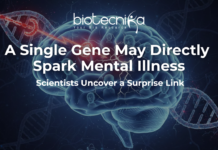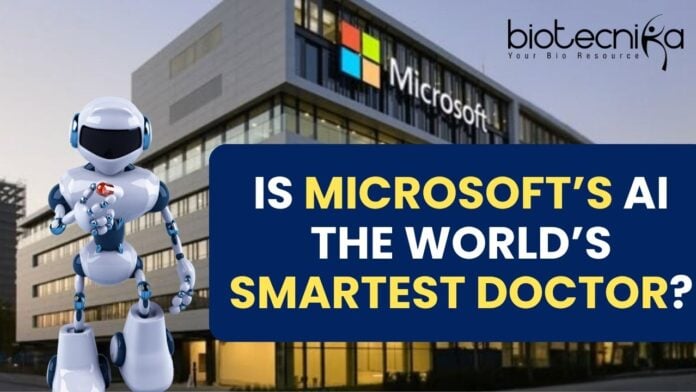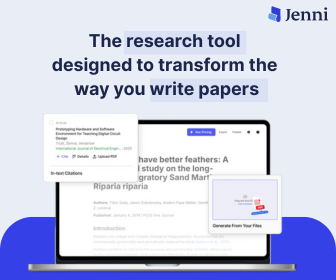Is Microsoft’s AI the World’s Smartest Doctor?
What if on your next visit to the hospital, your doctor didn’t wear a white coat, not even a stethoscope? What if your doctor is not human? Yes, you read it right. The future of medicine has been rewritten, thanks to the influence of AI. The tech giant Microsoft claims its latest AI system can diagnose and treat four times more accurately than real doctors. This is not a sci-fi plot or wishful thinking. This is happening now. Faster diagnoses, fewer errors, and cost-effective healthcare for millions of people across the world.
This ambitious project is led by Mustafa Suleyman, the CEO of Microsoft AI and a former Google executive. In a bold move that felt more like Silicon Valley Chess than Science, Microsoft handpicked Google’s brightest minds for its AI mission. This was an unmistakable sign that tech titans are in a fierce race to shape the future of healthcare.
Mr. Suleyman states that they have taken a genuine step towards medical superintelligence.
The result of their efforts, the MAI Diagnostic Orchestrator (MAI-DxO), is a next-generation AI tool that evaluates patient cases using methods that mirror the thought process of a real doctor. However, there is a twist in the story. It doesn’t rely on just one brain.
MAI-DxO taps into the power of several leading AI models, including OpenAI’s GPT, Google’s Gemini, Anthropic’s Claude, Meta’s Llama, and even Elon Musk’s xAI Grok. In effect, it simulates a panel of expert minds debating and collaborating to reach the most accurate diagnosis.
To test this AI marvel, Microsoft used 304 real patient case studies from the New England Journal of Medicine. The challenge? Diagnose each patient using a step-by-step approach, just as a physician would in real life.
Doctors participating in the study had no access to additional tools, relying solely on their training and instincts. The AI system, meanwhile, used its orchestrated network of models to break down the cases methodically.
What is the final tally? MAI-DxO got the proper diagnosis 80% of the time. The panel of human doctors? Just 20%.
The AI achieved this while selecting tests and procedures that reduced costs by roughly 20%. In a country like the United States, where medical bills are a leading cause of bankruptcy, that number isn’t just impressive. It’s revolutionary.
Mr. Suleyman explains that the orchestration mechanism is what drives us closer to medical superintelligence.
AI in health care isn’t new. It’s already helping radiologists interpret scans and flag abnormalities. But what Microsoft has done is different. This isn’t about analyzing one image or test result. It’s about reasoning like a doctor, asking questions, ordering tests, and adjusting hypotheses in real-time.
The system’s ability to emulate this layered thinking, while consulting a virtual panel of AI “experts,” moves the technology a giant leap forward.
Dominic King, Microsoft’s Vice President involved in the project, called the results “incredibly exciting.”
He further adds that they are not just hitting the right diagnosis; they are doing it more efficiently and affordably.
MIT scientist David Sontag is not involved in the project; however, he agrees with the study. He calls it rigorous and innovative, especially in its mirroring of real diagnostic reasoning.
At the same time, he voices his concerns, urging caution. The doctors in the study weren’t allowed to use diagnostic tools they would normally rely on, potentially skewing the results.
Even after the massive success, the experts say it’s too early to celebrate the victory. In real life, medicine is messy. Doctors consider things AI can’t easily measure: patient anxiety, cultural context, and even how likely someone is to follow through with a recommended test.
Eric Topol, a respected scientist at the Scripps Research Institute, applauded the study for tackling complex diagnostic cases, but noted that the real proof will come when AI tools like MAI-DxO are tested in clinical trials with actual patients.
Topol says that the next step is to see how this will work in the real world, not just on paper.
Sontag further adds that we will know the accurate evaluation of cost and effectiveness only after implementing this bold AI model in real-life applications.
For now, Microsoft hasn’t decided whether it will commercialize the technology. One option reportedly being discussed: integrating MAI-DxO into Bing, allowing users to receive medical insights directly from their search engine. Another possibility is offering tools to medical professionals to assist or automate patient care.
With this move, we all know that the AI revolution isn’t just limited to labs; it’s already dealing with real-world problems.
The healthcare industry has suffered from high costs, a shortage of staff members, and diagnostic errors. A reliable AI co-pilot might be just what the doctor wants.
And if MAI-DxO’s performance is any indication, the days of second opinions from another doctor may soon give way to a second opinion from something far more powerful.























